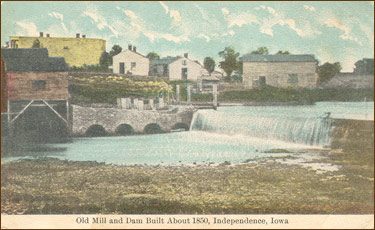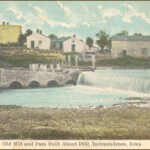
The village of New Haven was platted Feb. 27, 1854. It was a complete town including a grist mill or sawmill, blacksmith shop, stores and a cemetery.
There was no bridge across the Wapsi in those days and it was a complete village. The dam and sawmill were constructed by Samuel Sherwood, mill owner, in the fall of 1846 and the summer of 1847. A 21-year-old cabinet maker, Ammi Trask, helped build the dam (which lasted until 1891). The gates to the mill were wood planks protruding upward and were open or shut allowing the water to flow through the structure turning the wheel, or shut to go over the dam. The limestone he used cracked in cold weather and Sherwood never used limestone close to water in any other mill.
Lumber for his house nearby was hauled from Dubuque. At his barn, pigs were fed the oat bran, middlings and flour from the mill. Stage coach horses were stabled there also. The village was approximately eight blocks long and four blocks wide in 1854. The village existed for approximately seven years and it took a legislative act to have the name changed from New Haven to Stoughton & McClures Second Addition and be designated and known as an addition to Independence.
The name change was approved Jan. 27, 1857.
Attached Images


